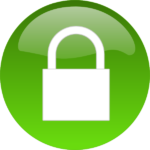Ownership – content, domains, accounts, do you really hold the rights to everything you do online?
It’s important to be clear about ownership of your web assets and content. Here we take a quick look at a couple of areas, and include an update on something we were talking about a fortnight ago – linking accounts.
Who owns your content?
It’s reasonable to assume that you have total ownership and full rights over all your original content that you post on the internet. Reasonable, but possibly wide of the mark. Double check the Ts&Cs of any sites where you post content.
Some sites such as LinkedIn explicitly reassure you that your content is yours and you have full rights to it, but there’s a sting in the tail:
…you own the content and information that you submit or post to the Services and you are only granting LinkedIn the following non-exclusive license: A worldwide, transferable and sublicensable right to use, copy, modify, distribute, publish, and process, information and content that you provide through our Services, without any further consent, notice and/or compensation to you or others.
– our bold, because that’s quite an important little clause. Some sites go further and expect to be able to use others’ original creative content royalty-free. This from WattPad, a creative writing platform:
C. For clarity, you retain all of your ownership rights in your User Submissions. However, by submitting User Submissions to Wattpad.com, you hereby grant Wattpad.com a worldwide, non-exclusive, royalty-free, transferable license to use, reproduce, distribute, display, and perform the User Submissions in connection with the Wattpad.com Website.
This is all there in black and white, but how many people actually read it, inform themselves and consider the ramifications? This is a concern as WattPad is aimed at the teen/young adult audience. These digital natives often dismiss this stuff as boring and unimportant, which can have unwelcome consequences.
If you’re posting original content make sure you understand what can be done with that content. Read the agreement and make sure you’re happy with it. Otherwise, don’t sign up.
Registering a domain name
Easy peasy. Find one of the few remaining available domain names, hand over your £9.99, fill in a few fields and you’re away. Or maybe you get someone else to do it and trust them to get it right. It isn’t that simple though and making common mistakes can jeopardise your whole business set-up.
Common mistakes
To focus on just a couple of mistakes, do you know who’s named as the owner of the domain your business relies on? Do you know who’s named as the administrative contact? These should be respectively the owner of the business and the person who is authorised and competent to act for you on domain matters. This should be an in-house IT person or a trusted technical provider.
Do you know if the contact email on your domain registration arrives at a live and monitored inbox? Is there an established path to contact you, eg to deliver notice that your domain name is nearing expiry? This all sounds extremely simple and it is, but many small business owners don’t know the answers. To make matters worse, they wouldn’t know who to ask. This exposes a business to losing their online presence and email addresses.
Consider this from Nominet:
We have always required domain name holders to provide accurate and up-to-date information in the form of a correct registrant name and postal address. Failure to do this means a registrant risks losing their domain name.
And that’s before a company registering a .uk is wrongly described as a charity. This and other mistakes can legally permit your domain to be removed from you. We’ve had to act for clients who’ve suffered this mistake. It’s now our practice to run the rule over existing domains new clients bring to us. It’s all part of the service.
Ask the experts
Help is at hand. In this as with so much else, OpenSure can see the process through for you accurately and quickly. We can run a check on an existing domain and advise on domain queries, such as false invoicing scams.
Using a third-party app to log-in
Two weeks ago we looked at why linking accounts on different platforms wasn’t such a good idea, and now this from Computerworld:
A new tool allows hackers to enerate URLs that can hijack accounts on sites that use Facebook Login, potentially enabling powerful phishing attacks.
All sorts of sites allow you to use other sites’ logins to log in to them, eg Goodreads. This is yet another example of stretching security rather thin, completey unnecessarily. Just come up with a unique login for your Goodreads account and snip another thread between your online identities.
 Imagine you’re already a very happy user of an open source program, full of the joys of freedom of choice, and you’ve chosen Original Sync (imaginary software for our imaginary scenario) to keep track of your contacts, appointments and emails.
Imagine you’re already a very happy user of an open source program, full of the joys of freedom of choice, and you’ve chosen Original Sync (imaginary software for our imaginary scenario) to keep track of your contacts, appointments and emails.
 How often do you get an
How often do you get an